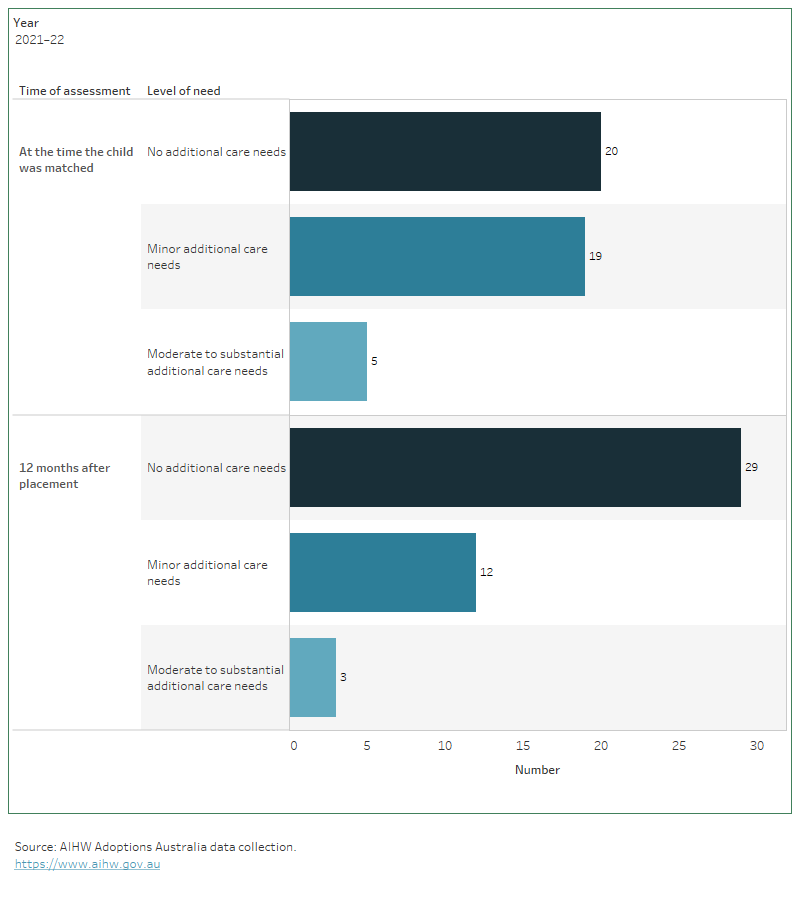Adoptions of children with additional care needs
In the Australian adoption context, additional care needs are defined as the level of resources or support services required by the adoptee and/or their adoptive family to:
- foster healthy development and wellbeing
- support positive family functioning
- prevent adoption disruption.
Additional care needs are examined through a continuum of level of need that is broken down into the following categories:
- no additional care needs
- minor additional care needs
- moderate to substantial additional care needs.
Definitions for these categories can be found in the glossary.
The level of need of intercountry adoptees is assessed when a child has been matched with and accepted by prospective adoptive parent(s) as part of the intercountry adoptions process, and again 12 months after entering Australia. This includes children who were placed with their adoptive families regardless of whether their adoption order had been finalised.
Of the 44 children who entered Australia in 2020–21:
- 20 were identified as having no additional care needs when they were matched with their prospective adoptive parent(s)
- 24 had some level of additional care needs:
- 19 were assessed as having minor additional care needs
- 5 with moderate to substantial additional care needs.
These counts varied substantially when the level of need was assessed again 12 months after the children entered Australia:
- Most (29) children were classified as having no additional care needs
- 12 were reported as having minor additional care needs
- 3 were reported as having moderate to substantial needs (Figure 7).
Figure 7: Intercountry adoptees who entered Australia in the previous year, by assessed level of need at the time the child was matched, and 12 months after placement, 2017–18 to 2021–22
The horizontal bar chart shows that 12 months after placement of an intercountry adoptee, the number of those with no additional care needs increased compared to the time the child was matched. The number of children with minor additional care needs and moderate to substantial additional care needs at the time the child was matched decreased 12 months after placement.

Notes
- Includes all Hague and bilateral intercountry adoptees from partner countries who entered Australia for each financial year. For example, for 2021–22, counts include all Hague and bilateral intercountry adoptees who entered Australia between 1 July 2020 and 30 June 2021.
- 'Level of need' is based on the assessment information available 12 months after the child entered Australia. Where available assessment information indicates different levels of need, preference is given to the most recent assessment information.
- Excludes adoptions from Western Australia, who were unable to report on the level of need.
From 2017–18 to 2021–22, for children who entered Australia in the previous year:
- the number of children assessed as having moderate to substantial additional care needs has declined from 25 to 5
- the number of children assessed as having minor additional care needs has remained generally stable, ranging between 17 to 19, except for those who entered Australian in 2018–19, where only 11 children were assessed as having minor additional care needs (unpublished data from AIHW Adoptions Australia data collection).


